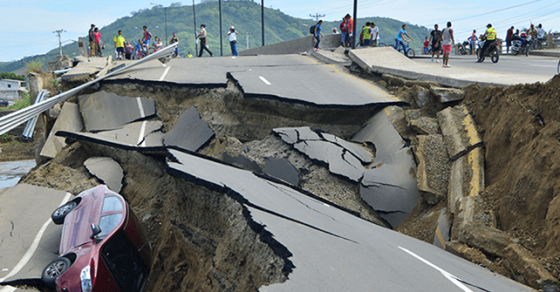This article was originally published by Ethan Huff at Natural News.
Last week, the Los Angeles Times reported that “two sets of earthquake swarms” just hit California. It turns out that these swarms, together with some in nearby Nevada, produced an astounding 1,000 earthquakes between the two states in a single week.
“To me, whenever that number goes about 1,000, we are officially in the danger zone,” commented Michael from End of the American Dream (EAD). “Hopefully there will not be a very large earthquake in California any time soon, but when there is this much shaking going on we should all be on alert.”
The largest of the 1,000 was not all that large: a 4.1 magnitude quake that rattled Imperial County, located near the Salton Sea. The epicenter was 18 miles south of Salton City and four miles southeast of Ocotillo Wells, occurring at 5:17 a.m. on May 22.
Residents as far as Chula Vista near San Diego, Mission Viejo in Orange County, and Highland and Indio in other surrounding areas reported feeling the quake.
Before that one, there were two other “earthquake swarms” that reportedly alarmed scientists. These occurred along the California-Mexico border.
The U.S. Geological Survey reported that more than two dozen quakes with a magnitude of greater than 2.5 hit the region just after midnight last Saturday. The general area of their epicenters is 175 miles southeast of downtown Los Angeles and 100 miles northeast of San Diego.
“They have occurred largely along farmland between the towns of Brawley and Imperial in Imperial County,” it was reported. “The largest quake was a magnitude 3.9 that struck at 4:05 p.m. Saturday, bringing light shaking to the Imperial Valley as well as south of the border and rattling Mexicali.”
(Related: The infamous San Andreas fault is also rumbling as of late – is the New Madrid Fault Zone next?)
How close are we to the big one?
Just before that swarm, another one occurred “about 18 miles southeast of Mexicali in Baja California,” Baja California being a West Coast region of Mexico and not the state of California here in the U.S. The largest in that swarm was a magnitude 4.2.
The public has been hearing for years that California is long overdue for the “big one,” so these latest swarms are turning heads as they could be pointing to a worst-case scenario in the coming days.
Either these are foreshocks or they are the fault lines releasing pressure and buying more time, so to speak, before the big one eventually and inevitably hits.
If the big one did strike, “it would be a matter of a few tens of seconds before the shaking from a San Andreas event that ruptures the segments closest to Los Angeles reach our urban areas,” commented John Stewart from the University of California, Los Angeles (UCLA).
The California Earthquake Authority estimates that the big one will cause destruction in a 100-mile radius from the entire fault line which is massive, stretching from Eureka all the way in northern California to Palm Springs in the south.
The death toll would be at least 1,800 people, not to mention the millions of homes that would be destroyed. The total damage bill is likely to be around $290 billion.
Over in Italy, the largest earthquake to strike the Campi Flegrei supervolcano in 40 years hit, registering at a magnitude of 4.4. That one caused mild damage in the town of Pozzuoli and was felt as far away as the city of Naples, according to Italy’s National Institute of Geophysics and Volcanology (INGV).
“Unfortunately, I am entirely convinced that we are entering a time when major natural disasters of absolutely epic proportions will just keep hitting our planet one after another,” Michael from EAD concludes.
Learn more about how to protect yourself in the event of a natural disaster at Disaster.news.
Read full article here


